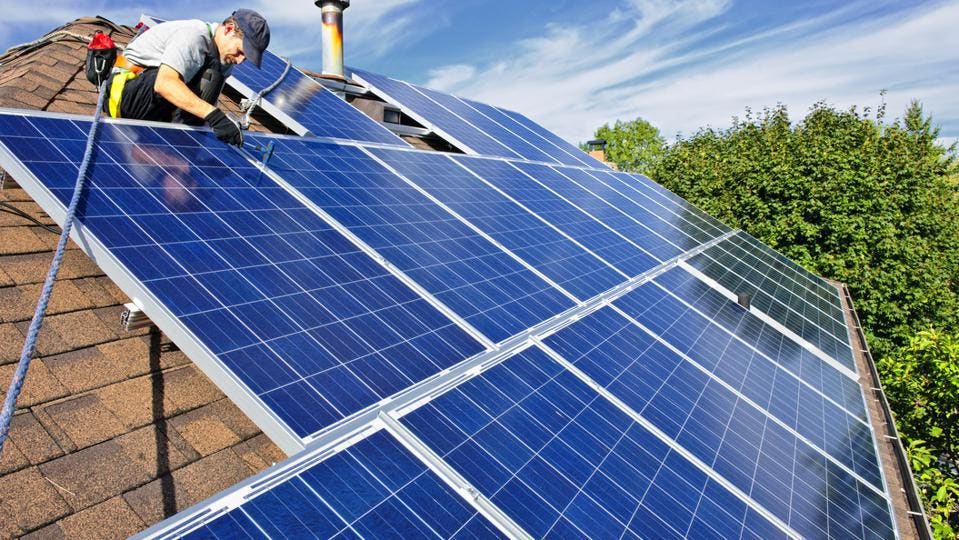Solar Energy Facts That May Surprise You In 2024 – Forbes Home – Forbes
Solar energy is the most abundant energy resource on the planet. According to the Department of Energy, some 173,000 terawatts of solar energy repeatedly strikes the Earth, which amounts to more than 10,000 times the world’s total energy use. Here are some other interesting solar energy facts:
The amount of solar currently installed in the U.S. is 162 gigawatts (GW).
Solar has experienced an average annual growth rate of 24% in the past decade due to the federal tax credit, decreasing costs to install solar and greater demand for clean energy among the private and public sector, according to Solar Energy Industries Association (SEIA). As a result, more than 162 gigawatts (GW) of solar capacity are installed throughout the U.S., which can power nearly 30 million homes.
The value of the U.S. solar market in 2022 is $36.3 billion.
Solar is an economic engine, and the solar industry in 2022 generated more than $36 billion of private investment in the American economy, per SEIA. Greater investment in the solar market means lower greenhouse gas emissions, better energy reliability, lower costs and a continued path toward stronger economic growth.
The solar industry has grown 200 times since 2006.
The Solar Investment Tax Credit (ITC) is a federal solar policy that was enacted in 2006, which gives homeowners a 30% tax credit when installing solar. It has been one of the most critical policies to incentivize clean energy in America. Since its enactment, the solar industry has expanded by 200 times, resulting in the creation of jobs and investment of billions of dollars in the economy, per the SEIA.
The solar market has grown 24% annually over the past 10 years.
A combination of federal and state incentives, lower costs of installing solar and increasing interest in renewable energy sources has helped the solar market increase by 24% in the past decade, per SEIA. This has resulted in achieving more than 162 gigawatts (GW) of solar capacity installed in the U.S., which can power about 30 million homes.
Over 5% of U.S. electricity comes from solar energy.
The move toward fully embracing solar energy is gaining momentum, as evidenced by the above numbers. Presently, more than 5% of U.S. electricity is derived from solar energy. This marks nearly 11 times its share a decade earlier, per SEIA. This marks an increase from 4.8% in 2022, per the National Renewable Energy Laboratory.
The solar industry hopes to generate 30% of electricity by 2030.
Shifting political dynamics, calls to address the real effects of climate change and the impact of the Covid-19 pandemic have all brought the need for solar growth to the forefront. Stronger policy commitment and burgeoning private sector innovation have made generating 30% of electricity by 2030 an attainable feat.
There are currently 10,000 solar companies in the U.S.
Nearly 300,000 Americans are employed in solar at more than 10,000 companies in states across America, per SEIA. Having 10,000 solar companies means the creation of many more jobs. Employees working at solar companies work in installation and as developers, work in manufacturing, sales and distribution and operations and maintenance.
The leading company using solar energy is Meta.
Leading U.S. businesses and brands are taking the reins and making greater investments in solar energy than ever before. Meta, for example, has the most solar capacity installed, as of June 2022. Other companies using solar energy include Amazon, Apple, Walmart and Microsoft. About 19 gigawatts (GW) of solar capacity has been installed with commercial and corporate solar purchasers, more than half of which has come online since 2020, per SEIA.
The top three corporate purchasers of wind and solar energy are tech companies Meta, Google and Amazon, according to a report by the American Clean Power Association, an industry group. By the close of 2022, 326 companies contracted 77.4 gigawatts of wind and solar energy, which can power more than 18 million homes. Solar projects are now surpassing wind as the preferred choice for corporate buyers, according to ACPA.
500GW of solar power will be installed over the next 10 years.
Over the next decade, 500GW of new solar capacity will be installed, which is four times more than the amount of solar power installed in 2022.
There are over 2,500 solar power plants in the U.S.
More than 2,500 solar power plants exist in states across the U.S. These are utility-scale solar photovoltaic (PV) electricity generating facilities, per the U.S. Energy Information Administration.
Wind and solar energy are expected to lead growth in U.S. power generation. Due to new solar projects coming online, the EIA reported that it expects solar power generation to increase by 75% from 163 billion kilowatt hours (kWh) in 2023 to 286 billion kWh in 2025. Wind power generation is estimated to increase 11% from 430 billion kWh in 2023 to 476 billion kWh in 2025.


